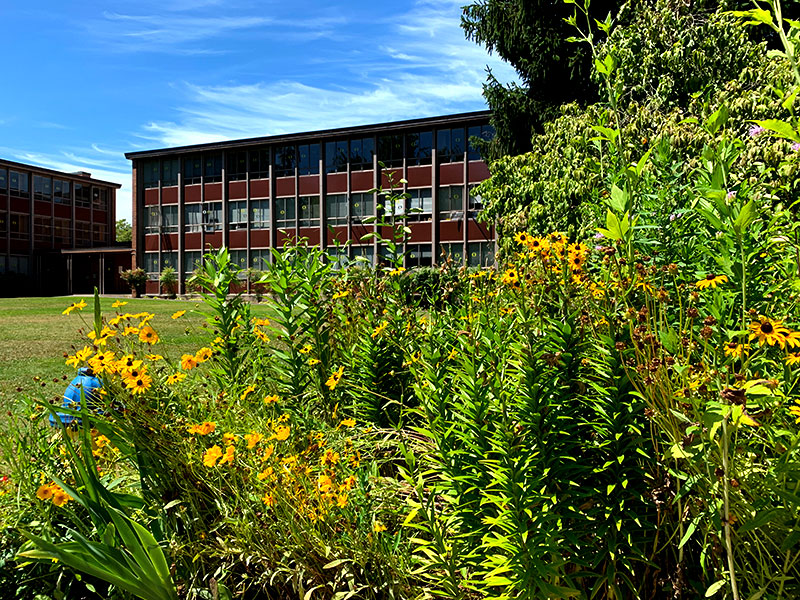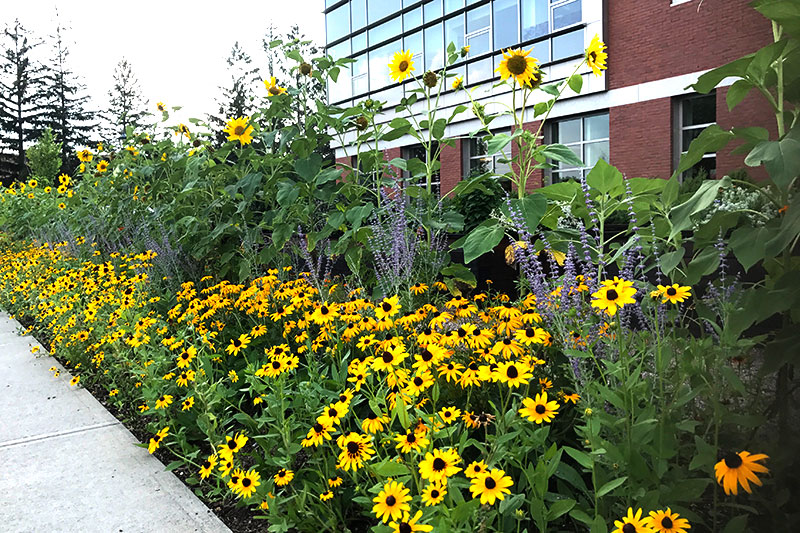
College campuses are generating buzz for protecting bees. Thanks to the popularity of its Bee City USA initiative, which encourages communities to create pollinator habitat, the nonprofit environmental group The Xerces Society created Bee Campus USA. The program helps colleges create sustainable habitats for pollinators on their campuses. The program, which launched in 2015, has grown to include 79 registered bee campuses nationwide.
Campuses are located in 33 states, according to the Bee City USA website, from Maine in the Northeast to Florida in the Southeast to California, Oregon and Washington on the West Coast, with many points in between.
Leadership teams of faculty, staff and students work together to create campus habitat plans, host educational events and sponsor service-learning projects. The efforts help educate campus populations as well as the community on the importance of pollinator protection.
The University of California, Davis, was certified as a Bee Campus USA site earlier this year.
“As the nation’s leading school of agriculture, we are surrounded by experts in pollination ecology, pollinator plantings, bee foraging behavior, plant-pollinator interactions, bee health and more,” wrote Rachel Davis, a horticulturist with the UC Davis Arboretum and Public Garden and chair of the Bee Campus USA committee, in an article for the American Public Gardens Association. “Plus, we have large numbers of highly engaged students focused on everything from protecting the environment for pollinators to designing and creating habitats for them to thrive.”
To earn certification, colleges must demonstrate that their campuses include pollinator gardens filled with native plants in different colors, shapes and bloom times to attract a variety of bees, butterflies, hummingbirds, bats, moths and other important pollinators. A bee-friendly campus should also offer habitat for nesting such as tall grasses, shrubs, small patches of bare ground and nesting blocks. It also should commit to limiting or avoiding pesticide use to protect fragile pollinator populations.
As part of the certification process, campuses must submit annual reports detailing their progress. Here are some examples of how schools are promoting pollinator protection:
- Portland State University in Oregon hosted beekeeping training, garden service events and seed giveaways as part of its Bee Campus USA activities in 2018. The school also includes classes such as Indigenous Gardens and Food Justice as well as Urban Farm Education to ensure that students understand the importance of pollinators in the food system.
- The University of North Carolina Asheville invited students to make their own bee boxes and offered tours of the bee hotels located across campus. The events attracted almost 300 attendees who gained an understanding of pollinator health, habitats and preservation. Thanks to the Bee Campus USA committee, the grounds crew planted more than 1,500 native pollinator plants in 2018.
- Gonzaga University In Spokane, Washington, hosted a screening of The Guardians, a documentary about Mexican communities that care for monarch butterflies in their local overwintering grounds, followed by a question-and-answer session with the director. The school also has two campus apiaries and adopted an integrated pest management plan to minimize pesticide use on school grounds.
Bee City USA founder Phyllis Stiles in blog posts has hailed the work of affiliates of the Bee City and Bee Campus programs. She believes the annual reports required to maintain certification document the important work that volunteers do to protect pollinators, and they also provide fresh ideas to campuses looking for new ways to engage students and the public in conservation efforts.
“Despite the busy lives we all lead, people across America are finding the time, mostly as volunteers, to welcome pollinating bees, butterflies, hummingbirds, moths, beetles, wasps, bats and flies into their yards, traffic islands, parks, school yards, church parking lots, businesses and roadsides,” Stiles writes. “They are telling their neighbors how they can integrate native plants into their landscaping and reduce herbicide, insecticide and fungicide use and say hello to the magical creatures that enable nearly 90 percent of the world’s flowering plant species to reproduce.”




